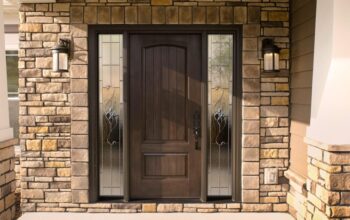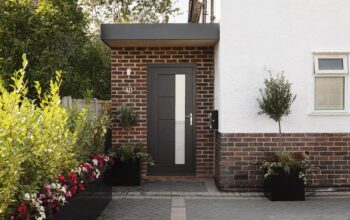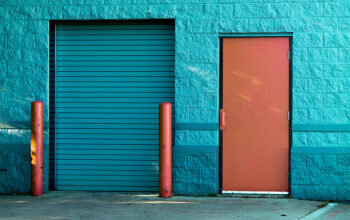So, you’ve just had sod installation done on your lawn, and you’re probably wondering if it was done correctly. After all, laying sod isn’t cheap, and you want to make sure you’re getting your money’s worth. The good news is, there are some clear signs that can tell you whether your sod installation was successful or if there might be issues lurking beneath the surface. Let’s break it down so you know what to look for.
The First 24 Hours: What to Expect Right After Installation
Right after your sod installation, the first thing you’ll notice is how fresh and green your lawn looks. That’s a good start, but it’s not the only thing you should be paying attention to. One of the earliest signs of a successful installation is how well the sod is making contact with the soil underneath. If it’s been laid properly, the roots should already be starting to bond with the ground. You can check this by gently lifting a corner of the sod. If it resists being pulled up, that’s a great sign.
Another thing to look for in the first 24 hours is how the sod feels underfoot. It should feel firm and stable, not squishy or loose. If it feels like it’s shifting around, that could mean it wasn’t laid tightly enough or the soil underneath wasn’t properly prepared. Watering is crucial during this time, but don’t overdo it. The sod should be moist, not waterlogged. Overwatering can cause the roots to rot before they even have a chance to establish themselves.
The First Week: Root Development and Color
By the end of the first week, you should start seeing some signs that the sod is taking root. One of the most obvious indicators is the color of the grass. If the sod was installed correctly, the grass should remain a vibrant green. If it starts to turn yellow or brown, that’s a red flag. It could mean the roots aren’t getting enough water or the sod wasn’t laid properly.
Another thing to check is how well the sod is adhering to the soil. After a week, the roots should be starting to grow into the ground. You can test this by gently tugging on a corner of the sod. If it’s still easy to pull up, that’s a sign the roots aren’t establishing themselves as they should. On the other hand, if it’s firmly in place, you’re on the right track.
The First Month: Growth and Stability
By the time a month has passed, your sod should be well on its way to becoming a fully established lawn. One of the key signs of a successful sod installation during this period is consistent growth. You should start seeing new blades of grass sprouting up, which means the roots are healthy and spreading. If the grass isn’t growing evenly or there are patches that look thin or bare, that could indicate a problem with the installation.
Another thing to look for is how the sod handles foot traffic. By this point, it should be stable enough to walk on without causing damage. If the sod still feels loose or shifts underfoot, that’s a sign the roots haven’t fully established themselves. You might also notice that the sod is starting to blend in with the surrounding soil. This is a good sign that the roots are growing deep and the sod is becoming part of your lawn.
Long-Term Success: A Healthy, Thriving Lawn
A successful sod installation isn’t just about the first few weeks—it’s about how your lawn looks and feels in the long term. After a few months, your sod should be fully established, with a deep root system that can withstand drought and heavy use. One of the best ways to check this is by performing a “tug test.” Grab a handful of grass and gently pull. If the sod stays firmly in place, that means the roots are strong and healthy.
Another sign of long-term success is the overall health of your lawn. The grass should be thick, green, and free of weeds. If you’re seeing a lot of weeds or bare spots, that could mean the sod wasn’t installed properly or the soil underneath wasn’t prepared correctly. A healthy lawn should also feel soft and springy underfoot, not hard or compacted.
Common Issues and How to Spot Them
Even with the best sod installation, things can sometimes go wrong. One common issue is uneven settling, which can happen if the soil underneath wasn’t properly leveled. This can create low spots where water pools, leading to soggy areas and potential root rot. If you notice puddles forming after watering or rain, that’s a sign you might have an issue.
Another problem to watch out for is poor root development. If the sod was laid on compacted or poorly prepared soil, the roots might not be able to grow deep enough to establish a strong foundation. This can lead to thin, patchy grass that struggles to thrive. If you’re seeing more brown than green after a few weeks, it’s time to investigate.
When to Call in the Pros
If you’re noticing signs that your sod installation might not have been successful, it’s a good idea to call in a professional. They can assess the situation and recommend solutions, whether that’s re-leveling the soil, adding more sod to bare spots, or adjusting your watering schedule. Sometimes, a little expert intervention can make all the difference in turning a struggling lawn into a lush, green paradise.
Final Thoughts: Ensuring Your Sod Thrives
A successful sod installation can transform your yard, but it’s not something you can just set and forget. By keeping an eye on the key signs—like root development, color, and growth—you can ensure your sod takes hold and thrives. Remember, every lawn is different, so don’t be afraid to adjust your care routine as needed. With a little attention and effort, you’ll have a beautiful, healthy lawn that you can enjoy for years to come.




